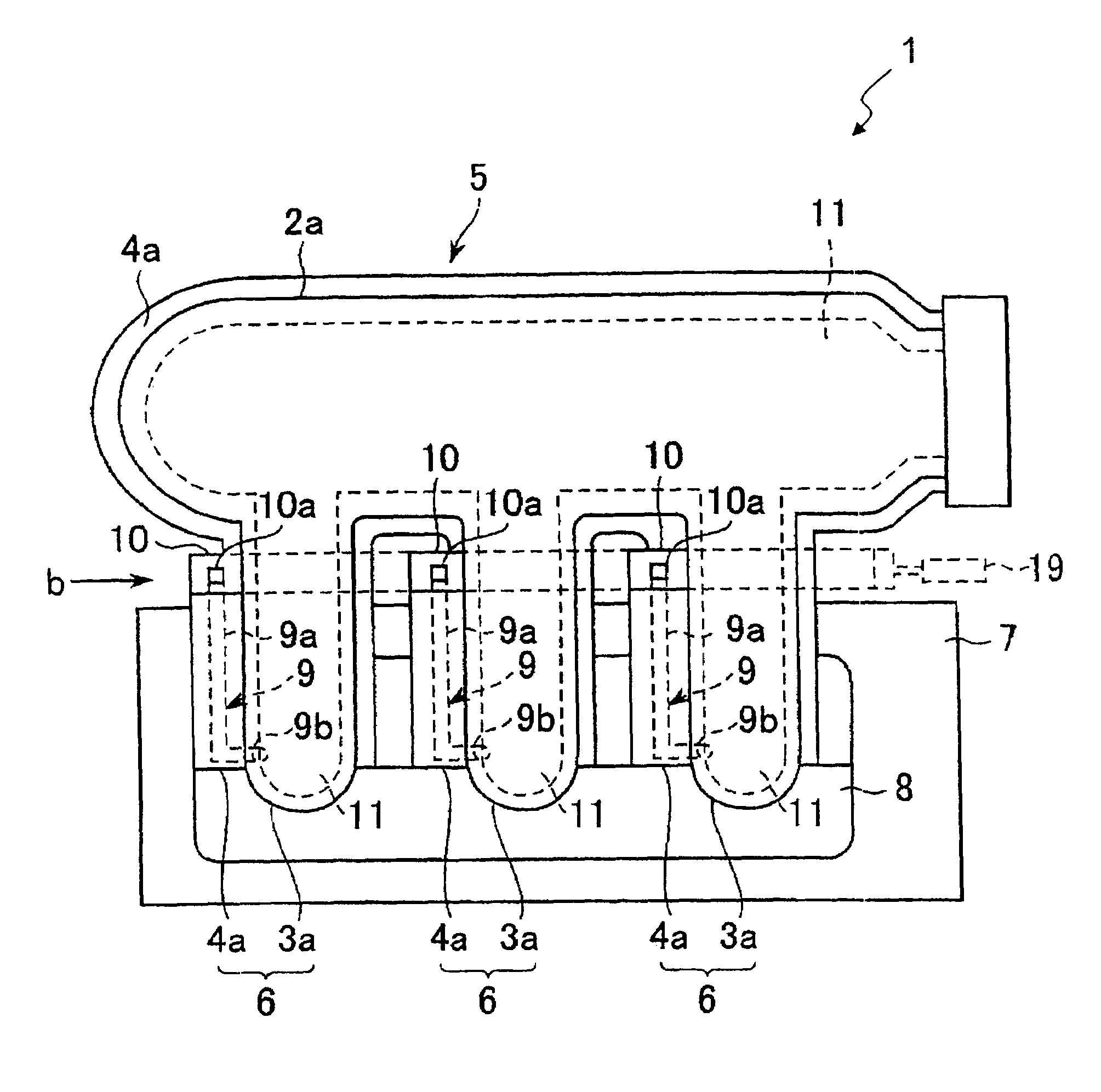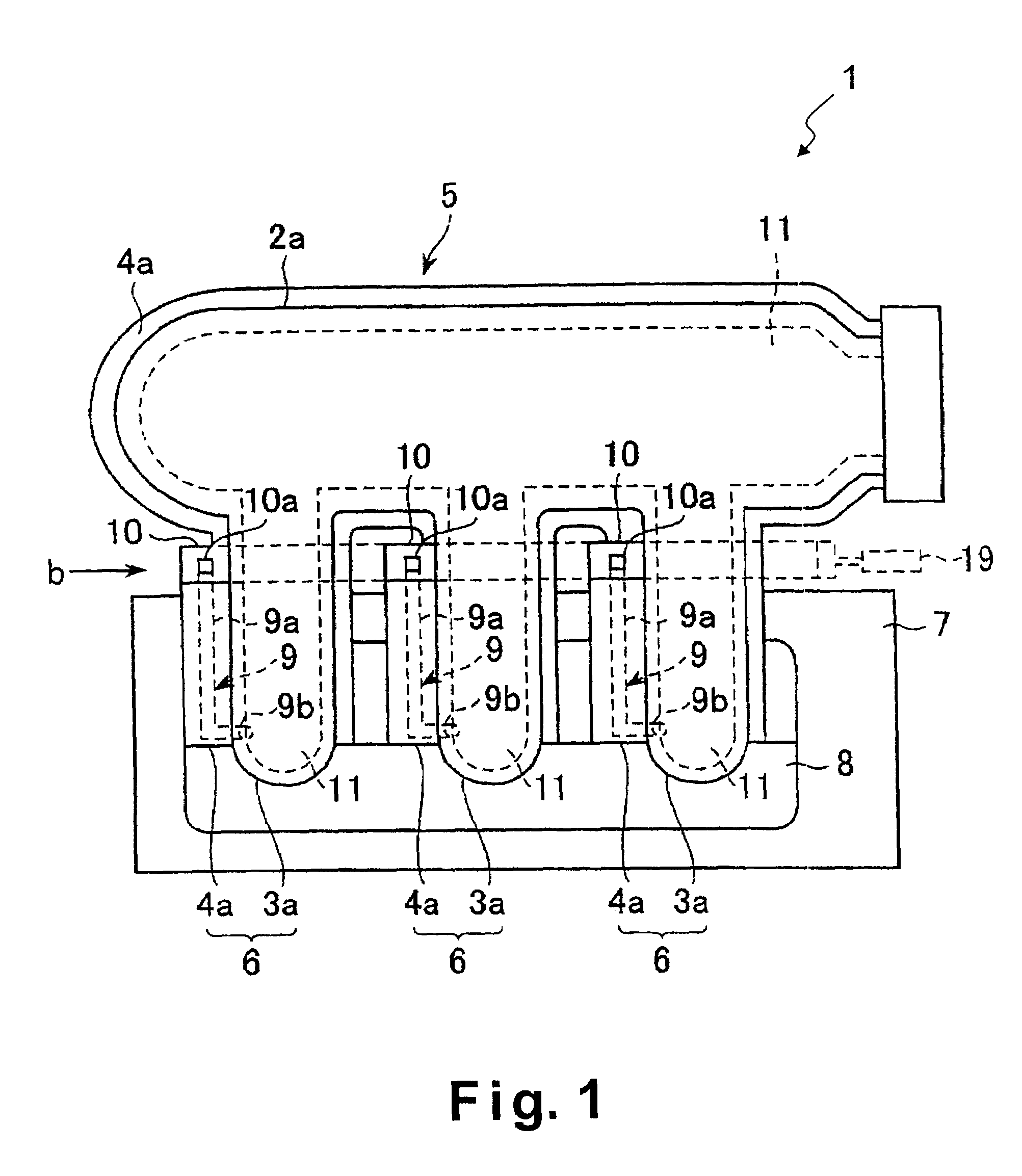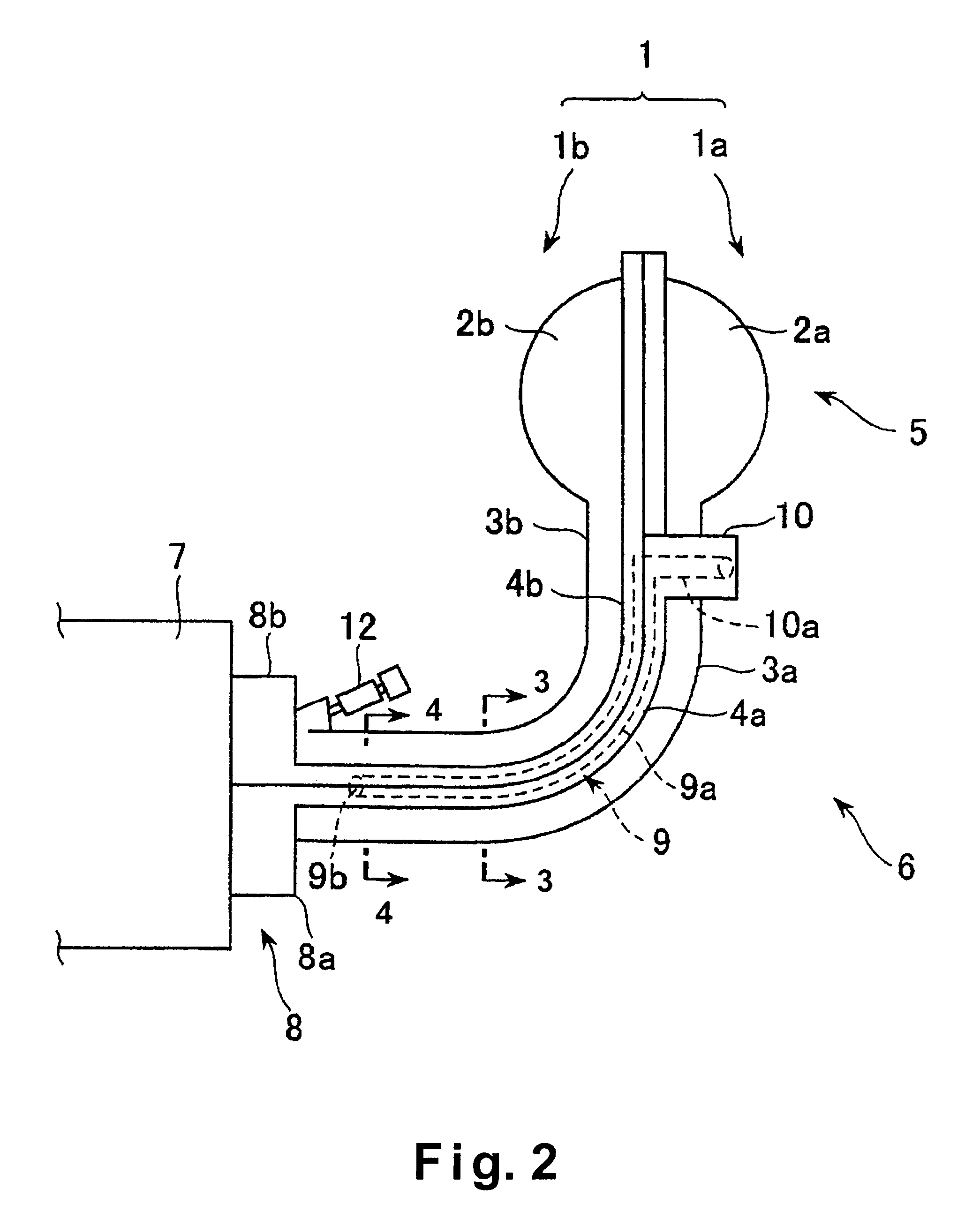Engine air intake manifold
a technology for air intake and engine, which is applied in the direction of air intake for fuel, combustion-air/fuel-air treatment, machines/engines, etc., can solve the problems of increasing affecting the arrangement of other parts, and affecting so as to reduce the number of parts and weight, prevent the contamination of the throttle valve, and improve the control response of secondary additive gases
- Summary
- Abstract
- Description
- Claims
- Application Information
AI Technical Summary
Benefits of technology
Problems solved by technology
Method used
Image
Examples
first embodiment
[0049]Referring initially to FIGS. 1–5, an air intake manifold 1 is illustrated in accordance with a first embodiment of the present invention. The air intake manifold 1 is configured and arranged for a multiple cylinder engine. This air intake manifold 1 is made of thermoplastic or thermosetting resin, and basically includes a pair (first and second) of main body sections 1a and 1b that are fixedly coupled together. Basically, the first main body section 1a includes a semi-cylindrical air intake passage forming part 2a, a plurality of semi-cylindrical air intake passage forming parts 3a that branch from the air intake passage forming part 2a, and a first flange part 4a formed in a radially protruding manner along the mating faces of the air intake-forming parts 2a and 3a. Similarly, the second main body section 1b includes a semi-cylindrical air intake passage forming part 2b, a plurality of semi-cylindrical air intake passage forming parts 3b that branch from the air intake passag...
second embodiment
[0062]Referring now to FIGS. 6–8, an air intake manifold 201 in accordance with a second embodiment will now be explained. In view of the similarity between the first and second embodiments, the parts of the second embodiment that are identical to the parts of the first embodiment will be given the same reference numerals as the parts of the first embodiment. Moreover, the descriptions of the parts of the second embodiment that are identical to the parts of the first embodiment may be omitted for the sake of brevity.
[0063]Basically, the air intake manifold 201 is identical to the air intake manifold 1, except that (1) the main body sections 1a and 1b are mated tightly together along a different mating plane which results in a single engine main body mounting flange 8 and a modified gas passage 9, and (2) a fuel injection device 12 has been added for each cylinder. Similarly to the first embodiment, this air intake manifold 201 includes a collector 5, a plurality of air intake branch...
third embodiment
[0070]Referring now to FIGS. 9–13, an air intake manifold 301 is illustrated in accordance with a third embodiment of the present invention. In view of the similarity between this embodiment and the prior embodiments, the descriptions of the parts of this embodiment that are identical to the parts of the first embodiment may be omitted for the sake of brevity.
[0071]Basically, the air intake manifold 301 is identical to the air intake manifold 201, except that (1) the cylindrical part 3c has been modified and (2) the introducing parts 10 have been replaced with a chamber unit 14. Similarly to the first and second embodiments, this air intake manifold 301 includes a collector 5, a plurality of air intake branch pipes 6 that branch from the collector 5, and a mounting flange 8 for mounting to an engine main body 7. Similarly to FIG. 1, air intake passages 11 of the air intake manifold 301 are formed inside the collector 5 and the air intake branch pipes 6. As shown in FIG. 9, the air i...
PUM
| Property | Measurement | Unit |
|---|---|---|
| weight | aaaaa | aaaaa |
| size | aaaaa | aaaaa |
| shrinkage | aaaaa | aaaaa |
Abstract
Description
Claims
Application Information
 Login to View More
Login to View More - R&D
- Intellectual Property
- Life Sciences
- Materials
- Tech Scout
- Unparalleled Data Quality
- Higher Quality Content
- 60% Fewer Hallucinations
Browse by: Latest US Patents, China's latest patents, Technical Efficacy Thesaurus, Application Domain, Technology Topic, Popular Technical Reports.
© 2025 PatSnap. All rights reserved.Legal|Privacy policy|Modern Slavery Act Transparency Statement|Sitemap|About US| Contact US: help@patsnap.com



